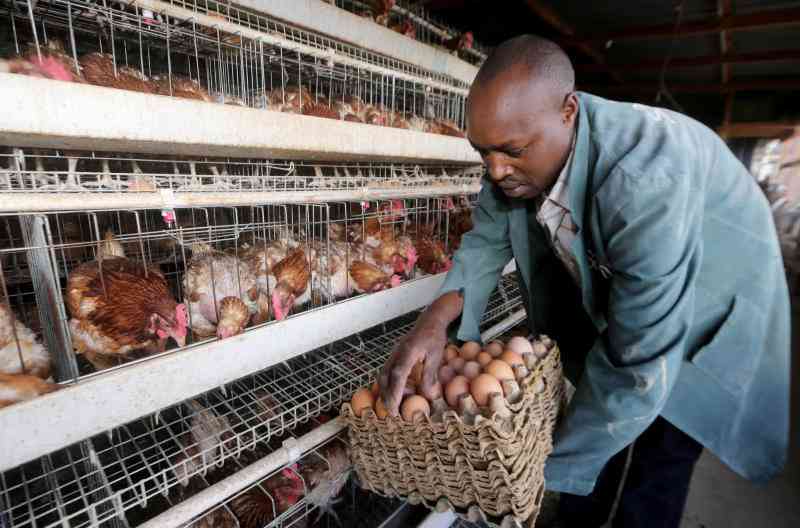
[Dear Dr Othieno,
For reproduction, I have been using a bull which is an exotic breed; it is more of a Friesian. Neighboring farmers have also been using this bull. We have found this method more affordable and convinient than Artificial Insemination considering the remoteness of our localities and the challenge of getting and inseminator onto.
So far the bull has served us well; however, something is beginning to worry me. It has been almost five years of using the bull and I am afraid that it might soon if not already serving its daughters. I know this is inbreeding and it is not allowed even among human beings. What is the harm of this practice, concerned farmer]
Thank you for that question. Inbreeding is the mating of animals that are closely related (for example parents and their offsprings, full brothers and sister or half brother and sister).
While inbreeding can have some advantages when used by an animal breeder; it has many negative effects on reproduction and growth and subsequently on productivity.
Negative effects
But before divulging into inbreeding, it is worth commenting on using a bull as compared to artificial insemination.
Using a bull for breeding has more disadvantages than advantages.
That you bull is being used to serve all the cows in your neighborhood should worry you.
First, there is a greater risk of the spread of sexually transmitted diseases which include: trichomoniasis, Bovine Herpes Virus, Brucellosis, Bovine Viral Diarrhea among others.
Venereal diseases in dairy production have a negative effect in delayed conceptions and loss of pregnancies through abortions and resorptions and costly veterinary interventions.
In addition, it has been shown that it is not economical to rear a bull purely for breeding as is the case with this above farmer.
The risks, the cost of feeding and treatment make Artificial Insemination (AI) affordable as compared to bulls.
However the use of AI requires a keen farmer for the observation of signs of heat and timely availability of the inseminator.
The last disadvantage of using a bull is the risk of inbreeding.
Advantages of Inbreeding
Inbreeding can be beneficial if the offspring receives desirable pairs of genes from parents that will result in superior performance.
The offspring receiving identical genes from each parent is said to be homozygous this is only beneficial if the genes result in superior performance.
However, this is a rare occurrence and requires the presence of an expert in breeding.
Commercial breeders have used inbreeding to maintain a degree of genetic relationship in their animals to superior ancestors as inbreeding increases the ability of an individual animal to consistently pass on its characteristics.
Disadvantages of Inbreeding
Most animals carry undesirable genes and inbreeding further magnifies this.
In genetic terms, this is called inbreeding depression.
Negative effects of inbreeding include reduction rate of growth and size of the animals –stunted growth, reduced conception rates – more services per conception, low birth weights, low weaning weights and low weight at maturity.
This explains the ever decreasing size of indigenous Zebu cattle where inbreeding has been reported as a major challenge. The opposite of inbreeding depression is hybrid vigour which are the advantages that gained from cross breeding or breeding unrelated animals.
This also leads to increased production and resistance to diseases. In general, inbreeding results in lowering of performance and higher frequency of hereditary defects.
Inbred animals have reduced mothering abilities. Continued inbreeding results in stunting which subsequently affects the productivity of livestock.
Controlling inbreeding
Keeping reproduction records is crucial in preventing inbreeding.
Even with AI, inbreeding can happen on a greater scale if the records of the sire and dam aren’t kept well by the farmer.
Good breeding records will help in ensuring mating is only among unrelated animals.
When using a bull, the farmer should be keen to cull it early enough before its daughter attain maturity.
Paddocking can help in separation of bulls from cows. Farmers can also practice exchange of bulls where AI isn’t available.
But this needs to be done carefully to avoid transmission of venereal diseases. AI is perhaps the most effective way of preventing inbreeding if the farmer keeps good records of the sires as is always indicated on the semen straws.
[The writer was the Vet of the Year Award (VOYA) winner in 2016 and works with the Kenya Tsetse and Trypanosomiasis Eradication Council –KENTTEC; he can be reached on [email protected]]
Want to get latest farming tips and videos?
Join Us
 The Standard Group Plc is a multi-media organization
with investments in media platforms spanning newspaper print operations,
television, radio broadcasting, digital and online services. The Standard Group
is recognized as a leading multi-media house in Kenya with a key influence in
matters of national and international interest.
The Standard Group Plc is a multi-media organization
with investments in media platforms spanning newspaper print operations,
television, radio broadcasting, digital and online services. The Standard Group
is recognized as a leading multi-media house in Kenya with a key influence in
matters of national and international interest.
 The Standard Group Plc is a multi-media organization
with investments in media platforms spanning newspaper print operations,
television, radio broadcasting, digital and online services. The Standard Group
is recognized as a leading multi-media house in Kenya with a key influence in
matters of national and international interest.
The Standard Group Plc is a multi-media organization
with investments in media platforms spanning newspaper print operations,
television, radio broadcasting, digital and online services. The Standard Group
is recognized as a leading multi-media house in Kenya with a key influence in
matters of national and international interest.








